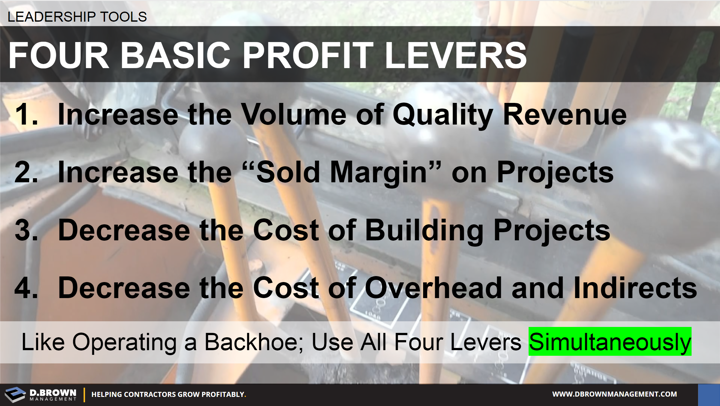- Increase quality revenue up to the point where it stretches your operational capacity. Not revenue for the sake of revenue but revenue in alignment with your market strategy and capabilities. Not stretching to the point of breaking but just enough to allow you to grow.
- Increase the “Sold Margin” on projects by finding the customers that will pay the most for the capabilities that you have and by building capabilities that the market places a higher value upon like advanced preconstruction services.
- Decrease the cost of building project through investments in talent, training, process streamlining, tools and technology.
- Decrease the cost of overhead and indirects in both absolute dollars by looking at every cost and asking how it truly adds value to the customer. Be careful not to “over-cut” and create a hollow organization that will impact future growth.
All are interrelated and seem simple on the surface.
A 3rd party perspective can be helpful for assessment and planning purposes

